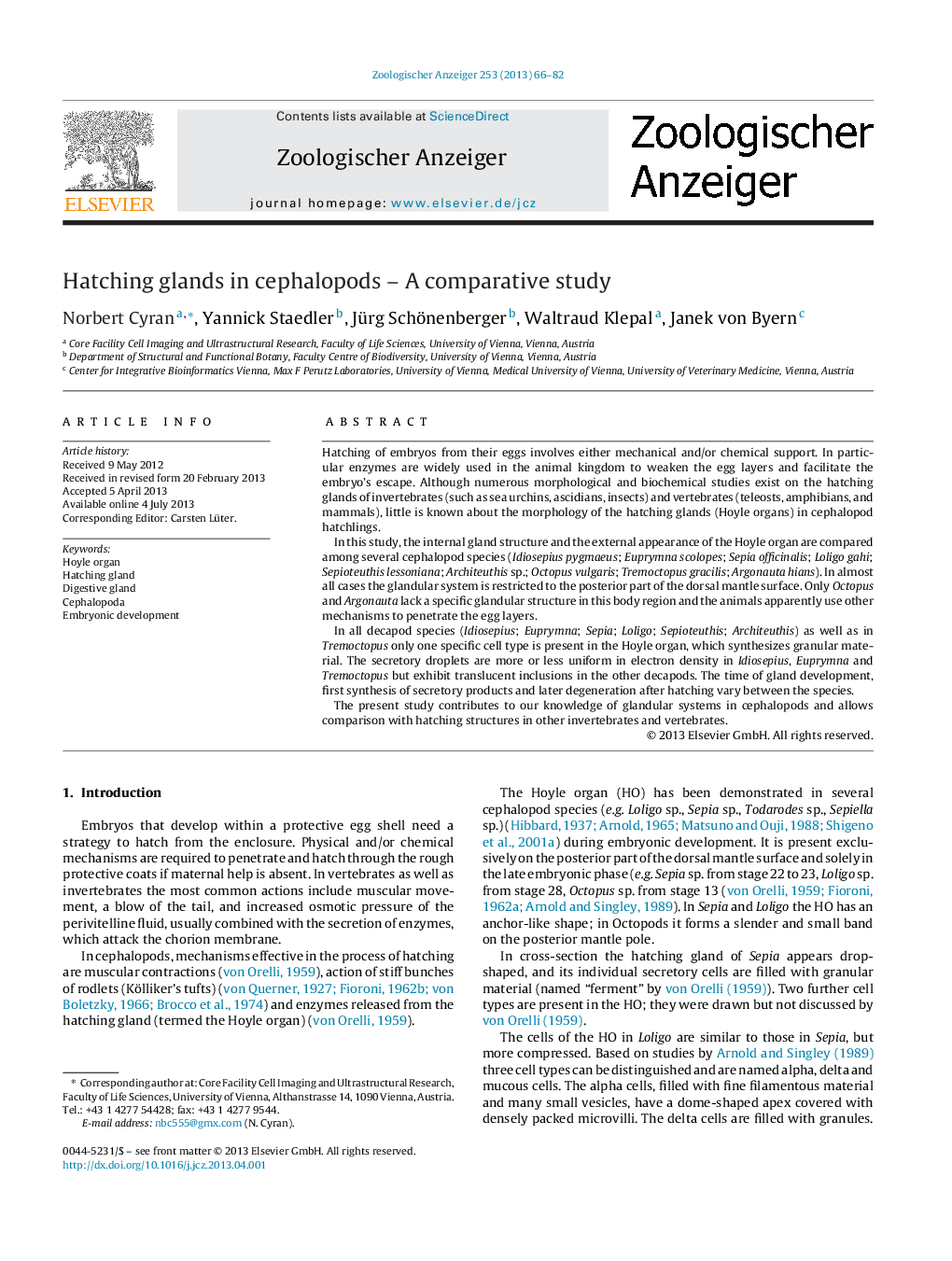| Article ID | Journal | Published Year | Pages | File Type |
|---|---|---|---|---|
| 2790641 | Zoologischer Anzeiger - A Journal of Comparative Zoology | 2013 | 17 Pages |
Hatching of embryos from their eggs involves either mechanical and/or chemical support. In particular enzymes are widely used in the animal kingdom to weaken the egg layers and facilitate the embryo's escape. Although numerous morphological and biochemical studies exist on the hatching glands of invertebrates (such as sea urchins, ascidians, insects) and vertebrates (teleosts, amphibians, and mammals), little is known about the morphology of the hatching glands (Hoyle organs) in cephalopod hatchlings.In this study, the internal gland structure and the external appearance of the Hoyle organ are compared among several cephalopod species (Idiosepius pygmaeus; Euprymna scolopes; Sepia officinalis; Loligo gahi; Sepioteuthis lessoniana; Architeuthis sp.; Octopus vulgaris; Tremoctopus gracilis; Argonauta hians). In almost all cases the glandular system is restricted to the posterior part of the dorsal mantle surface. Only Octopus and Argonauta lack a specific glandular structure in this body region and the animals apparently use other mechanisms to penetrate the egg layers.In all decapod species (Idiosepius; Euprymna; Sepia; Loligo; Sepioteuthis; Architeuthis) as well as in Tremoctopus only one specific cell type is present in the Hoyle organ, which synthesizes granular material. The secretory droplets are more or less uniform in electron density in Idiosepius, Euprymna and Tremoctopus but exhibit translucent inclusions in the other decapods. The time of gland development, first synthesis of secretory products and later degeneration after hatching vary between the species.The present study contributes to our knowledge of glandular systems in cephalopods and allows comparison with hatching structures in other invertebrates and vertebrates.
